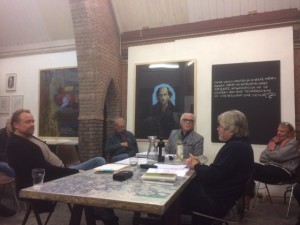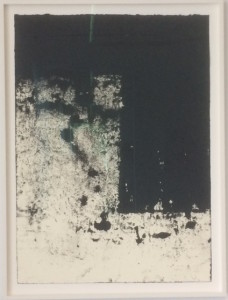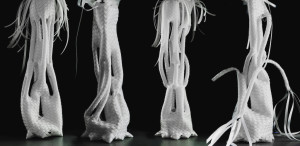During the last Building Holland conference on April 17-19th in Amsterdam – https://www.buildingholland.nl/preview-bh_aafc2016/20180426-een-smart-building-is-een-dienst – one of the presentations – ‘a Smart Building is a service’ – summarized on the website is the following; (alas only in Dutch, so translated by me).: ‘A smart building will later on not be a collection of stones with people in it, but will resemble more of a computer with roof on top. Sensors measure the presence and even happiness of people, life-cycle of materials, installations will be watched, the building will adapt to the wishes of the user, even when this user is unaware of this.’ Given the title: a service provided, managed and controlled by who?
One remark by a lawyer present: ‘when I hear the term ‘smart’ I know that in 99% of issues it concerns a privacy-problem.’
I could not be there, but I am certainly most glad he was……………
ethics & science; values and autonomous systems?
Published this month, the EGE ‘Statement on Artificial Intelligence, Robotics and Autonomous Systems‘, rapporteur TUD-Prof. Dr. Jeroen van der Hoven. Since ‘Autonomous Systems’ here includes the IoT its relevance/importance is obvious, in particular since the report states that ‘Autonomy in the ethically relevant sense of the world can therefore (see its philosophical origin, mp) only be attributed to human beings’. This comes as a rather anthropocentric approach; it excludes all other possibilities to add objects as autonomous elements while at the same time the report questions earlier: ‘Around which values do we want to organise our societies?’ If we conclude that the answer to this important question can be framed ‘post-human’, can we thus exclude a certain amount of autonomy for anything other then the subject?

the theory of making
On last Nov. 24 a discussion was held in Rotterdam between Wim Nijenhuis (arch/urban history, writer) and Pieter Lemmens (prof. Philosophy & Ethics Radboud Univ.) about the theory of making in the work of Bernhard Stiegler. Is digital technology a ‘pharmakon’; a medicine and poison at the same time? How to ‘make’ as an technological being? The recorded discussion will soon be on-line…..

(sm)art city
After a delay of some time the long awaited, monumental monograph of Cedric Price (1952-2003) was published recently by AA/CCA; 2 volumes in a box document extensively the impressive works and thoughts of one of the most influential British architects whose line of thinking still is more actual then ever. Like the projects of his Dutch contemporary Constant, who worked for almost 20 years on his New Babylon-project, the works of Price – in particular Fun Palace – show another approach towards (re)thinking and designing the built environment. In the words of Guardian-journalist Jeremy Melvin after Price’s death in 2003: “The architecture was indeterminate, flexible and driven by what technology then existed – and some that Price anticipated – for exchanging ideas and goods, and the movement of people from place to place.” Above all, Price offers “a focus to the optimism of the time, when it seemed possible to remake society around the potential for delight and opportunity.” Lees verder
to move a home
a Dutch building firm recently announced what they defined as a new concept in housing, i.e., they produce complete housing for young ‘start-ups’ that can be relocated if needed. Pre-fabricated in 2 sections and ‘in situ’ placed on top of each other it can be transported elsewhere since it answers the assumed need to take house and home with you. Lees verder
Serra’s drawings
Currently in Museum Boijmans Rotterdam; an intriguing exhibition of the drawings by the American artist Richard Serra; famous for his large steel pieces but now illustrating the value of drawing. What matters for Serra is “what emerges from the process in producing it (..) and evade the sculptural or architectural reference.”. Maybe so, but their image is spatial all the same…..

Are we Human?
wonderful talks at the New Institute Rotterdam by Mark Wigley and Beatriz Colomina who presented their little book; ‘Are we Human?’; a kind of summary of the 3rd. Istanbul Design Biennale 2016. Especially the link made by Wigley to Constant (Wigley wrote his great book: ’the Hyper-Architecture of Desire’ about New Babylon, 1998) about the moment Constant could longer envision man in his environments was a fine illustration of the problems we encounter with technology.
 Dirk van den Heuvel (TUD), Mark Wigley, Beatriz Colomina.
Dirk van den Heuvel (TUD), Mark Wigley, Beatriz Colomina.
IoT , Art & Imagination
the video-recordings of the 6th. IoT & Built Environment MeetUp on Art and Imagination at the WW-IoT-day in V2 Rotterdam are now online ! Look and listen back to a series of most interesting talks, comment and discuss further to ensure this important topic remains an issue. Listen to e.g. Rob van Kranenburg, Yvonne Droge Wendel, Michela Magas, Ben van Lier, Usman Haque, Frans Vogelaar.
#1_Welcome_Leon van Geest from 4D-FilmVisions on Vimeo.
van 3-d printen en the internet of things
a lecture by invitation of BNI on April 13th. 2017 at Intersteel Rhenen about the impact of IoT on interior-architecture and design; resulting in a fine discussion about the role/position of the architect and the consequences of technology within the home-environment.
Flora Robotica
a consortium of six European researchpartners has created the FloraRobotica project; which “objective is to develop and investigate closely linked symbiotic relationships between robots and natural plants and to explore the potentials of a plant-robot society able to produce architectural artifacts and living spaces.”
 ‘braid columns’
‘braid columns’
